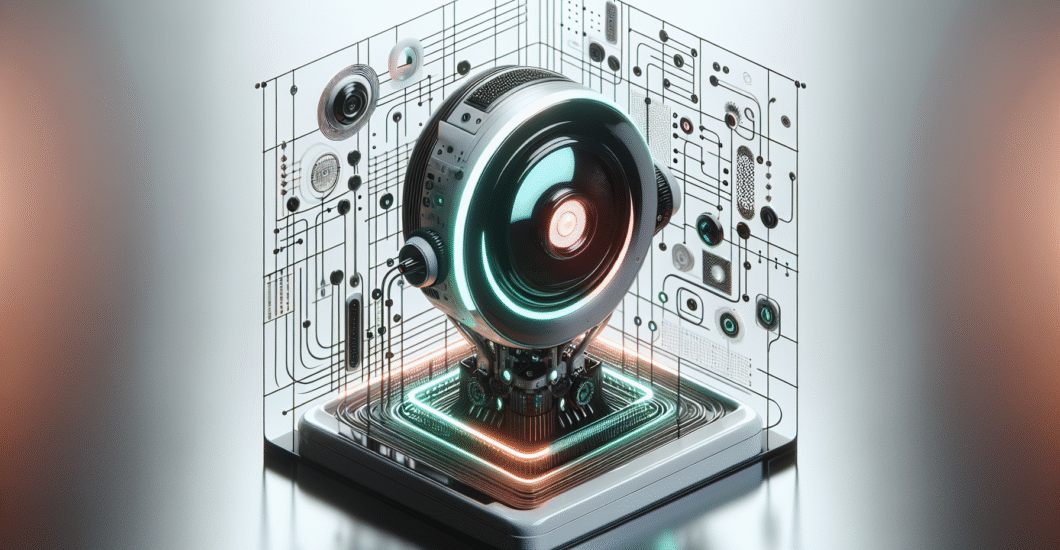AI Learns How Vision and Sound Are Connected, Without Human Intervention
Estimated reading time: 5 minutes
- AI models are learning to connect visual and auditory stimuli independently.
- MIT’s breakthrough model improves audio-visual synchronization for better content retrieval.
- Applications span journalism, robotics, and education, transforming workflows and learning experiences.
- Ethical considerations are essential as AI technology matures.
Table of Contents
- The Cutting-Edge Breakthroughs in AI Learning
- How This AI Model Functions
- Practical Applications of This Technology
- Why This Matters
- Implications for the Future of AI
The Cutting-Edge Breakthroughs in AI Learning
Imagine a world where artificial intelligence independently connects the dots between what we see and hear, just like we do. The recent advancements in machine learning are tipping those dreams into reality, enabling AI models to autonomously grasp the intricate relationships between visual and auditory information—without needing a human hand to guide them. This innovative leap brings us closer to creating more intuitive and versatile AI systems capable of engaging with the world as humans naturally do.
At the forefront of this groundbreaking technology are researchers at MIT and their collaborators, who have designed a state-of-the-art AI model capable of accurately identifying where specific sounds occur within the flow of video. The magic lies in how this AI aligns audio events—like the sharp clang of a door slamming—directly with the corresponding visual frames, consequently improving our ability to retrieve relevant content from complex audiovisual datasets. Notably, MIT’s recent research demonstrates this model’s superiority over its predecessors by honing in on fine-grained connections between individual video frames and the sounds they emit.
So, how does this work? Instead of merely correlating entire audio and visual tracks, as previous models did, the new algorithm focuses on the nuanced interplay of each sound and image, honing its learning process for better accuracy and efficiency. This ambitious methodology proves essential in executing tasks such as video retrieval and action classification, where precision is invaluable. By balancing various learning objectives—like matching accuracy and generalization—the system showcases significant advancements in performance and outcomes.
How This AI Model Functions
Understanding the mechanics of this AI model helps illuminate its capabilities. The system learns joint representations of audio and visual inputs, seeking common threads that bind them together. For example, it can connect the visual representation of a baby crying with the corresponding audio clip that includes the word “crying.” This unique ability illustrates the power of AI learning without human intervention, where the model autonomously identifies and synchronizes relevant audiovisual materials.
With this breakthrough, the AI can tackle “cross-modal retrieval” tasks more effectively—finding pertinent video, audio, or text based on queries stemming from different types of input. This is crucial for creating a user-friendly experience, as the model provides increased transparency on why specific results were matched. Imagine querying an AI using a spoken question and getting a precise video clip as an answer; this technology is making that once-futuristic scenario a present-day reality.
Practical Applications of This Technology
The implications of AI learning to connect vision and sound independently are vast and multifaceted, penetrating various sectors:
- Journalism and Film Production: The media industry stands to benefit immensely from automatic curation of multimodal content. Imagine an editor quickly locating and matching audio and video clips for editing or archiving without scouring through endless files. This capacity for precise matching not only streamlines workflows but enhances creative storytelling.
- Robotics: As robotics technology becomes increasingly advanced, the ability to combine audiovisual perception is essential for robots to interpret their environments. This fundamental advancement aids autonomous decision-making, allowing machines to navigate the complexities of the real world, whether in homes or industries.
- Education and Training: The potential for enriched learning experiences grows with AI that can identify and synchronize relevant visual and auditory materials. Such systems pave the way for more interactive and immersive educational scenarios, benefiting both teachers and students while fostering a deeper understanding of complex subjects.
Why This Matters
This remarkable advancement signifies a crucial juncture for AI—a step closer to machines learning in the natural way humans do. We rely on our senses to make connections and interpretations of the world, and now AI is beginning to develop similar capabilities. Such progress can enhance situational awareness in intelligent agents, leading to richer, more meaningful interactions between humans and AI, particularly in environments requiring complex sensory integration.
As we glimpse the possibilities of AI systems that learn and reason across multiple sensory modalities, the potential for innovation in fields such as healthcare, disaster response, and more expands exponentially. The technology stands to revolutionize how we communicate with machines, redefine user experience, and spark new avenues for creativity and problem-solving.
Implications for the Future of AI
While these advancements bring AI into a realm closer to human cognition, we must also navigate the challenges they present. Ethical considerations regarding data privacy and the responsibilities tied to AI capabilities will become crucial as the technology matures. Consequently, stakeholders in the AI sector must establish guidelines to manage these powerful tools responsibly.
As we continue to explore and push the boundaries of AI, it’s imperative that researchers and enterprises alike remain vigilant, ensuring that the AI technologies developed are aimed at benefiting society as a whole. Such efforts will help maintain public trust while leading us toward an AI-enabled future defined by collaboration between human and machine.
In conclusion, the research highlights significant progress toward building AI that can autonomously make sense of its environment, providing an exciting glimpse into the future of machine perception and intelligence. For those curious about how VALIDIUM can support organizations in adopting these cutting-edge AI solutions, we invite you to connect with us on LinkedIn for more information.
As we stand at the cusp of an AI-driven transformation, embracing these advancements paves the way for richer, more nuanced interactions that will undoubtedly reshape the world around us.


